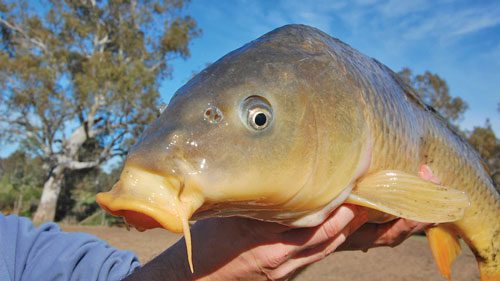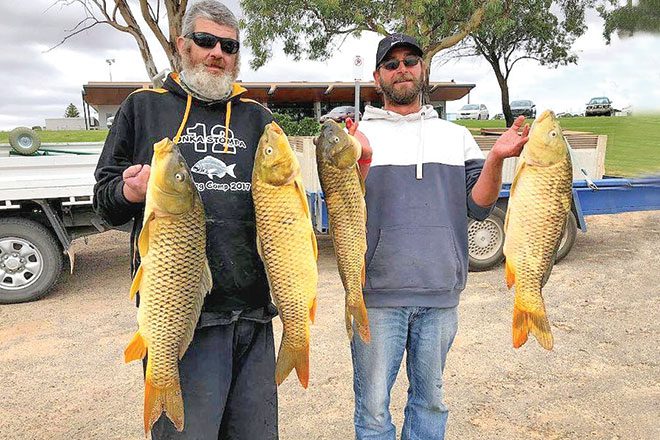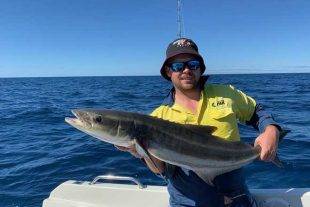The solution to reducing carp numbers could be an introduced herpes virus.
Carp have caused devastation to the native fish species of the Logan and Albert River systems.
Because they can tolerate extreme temperatures – 4-40C – carp have flourished in most Australian waterways.
Native to central Asia, carp were introduced to Australia in the 1800s for sportfishing.
University of Queensland School of Biological Sciences researcher Andrew Barnes said carp could extract nutrients from sediment and algae and were not fussy eaters.
“They tolerate low oxygen and need very little water, which means they are very successful in many freshwater environments and simply crowd out the locals by better using the resources available,” Professor Barnes said.
Logan and Albert Fish Management Association secretary Lloyd Willman said the introduced pest species was first found in southeast Queensland river systems after the 1974 floods.
Mr Willman added that state and federal governments had been working on plans to activate the herpes virus without affecting the environment since the release of the National Carp Control Plan at the end of 2022.
And said that carp are definitely in the rivers in big numbers and that the virus to be introduced was a common carp virus.
“It is normally passed by the carp contacting each other, and then within a couple of days, they die,” Mr Willman said.
Mr Willman and Dr Barnes said there were concerns about introducing the virus where the carp population was high.
“Most viruses and hosts adapt over time, so it’s not a sure-fire solution, and the carp herpes may very well become Murray cod virus,” Dr Barnes said.
“Natural systems are complicated, and you can’t replicate them in a testing situation.”

Dr Barnes added that if the herpes virus was introduced, the carp could continue to impact the native fish after they had died.
“In a localised area with a lot of carp, the virus would cause problems as the dead carp would decay, and would knock the water quality down, lower the oxygen and increase ammonia, which is toxic in the water,” Dr Barnes said.
“These impacts could take out a lot of native fish and other aquatic animals from the drop in the water quality.
“If the virus is introduced, the dead carp would need to be removed every day so that they don’t continue to impact the native species.”
Dr Barnes said viruses such as herpes killed the carp in different ways and, while experiments in fish farms had worked well, there was no guarantee of the success rate in the wild.
He said the virus could burst fish cells, suppress the immune system or weaken the animal enough that it became prey.
“While koi herpes virus has been quite nasty in experimental infection models and in fish farms, in a natural outbreak, mortality rates might be quite low,” Dr Barnes said.
“This means the effectiveness as a biocontrol agent might not be quite as good as hoped or expected.
“It can’t be predicted how quickly or how many fish the virus might kill in a natural system.
“There will be a whole bunch of variables that will impact that.”
A Biosecurity Queensland spokesperson said the National Carp Control Plan was a work in progress and that further work on a number of significant issues has been proposed before a decision on the release of the virus is made.
Accordingly, this may include further research on the safety of the virus to non-carp species, regulatory approvals, agreement from all relevant jurisdictions and extensive stakeholder consultation.
Once the outstanding issues were addressed, the government would develop its response to the plan.
Carp is a restricted noxious fish under the Biosecurity Act 2014 and must not be kept, fed, given away or released into the environment without a permit.
 Bush 'n Beach Fishing Magazine Location reports & tips for fishing, boating, camping, kayaking, 4WDing in Queensland and Northern NSW
Bush 'n Beach Fishing Magazine Location reports & tips for fishing, boating, camping, kayaking, 4WDing in Queensland and Northern NSW








